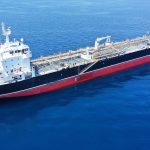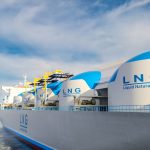

A Comprehensive Guide to Chartering the Right Platform Supply Vessel
In the dynamic and demanding world of offshore oil and gas exploration, ensuring the efficient transportation of supplies and personnel to and from offshore platforms is crucial. This is where Platform Supply Vessels (PSVs) play a vital role. PSVs are specialized vessels designed to transport essential equipment, supplies, and personnel to offshore oil and gas platforms. Chartering the right Platform Supply Vessel can significantly impact the success and safety of offshore operations. This guide aims to provide a comprehensive overview of chartering PSVs, helping you make informed decisions for your offshore needs.
Understanding Platform Supply Vessels (PSVs)
Platform Supply Vessels are a type of offshore vessel specifically designed to support the operations of oil and gas rigs. They are equipped to carry a variety of cargo, including drilling equipment, chemicals, cement, and food supplies, as well as to transport personnel. PSVs are typically characterized by their large open deck space, which allows for the transportation of bulky equipment and containers, and their sophisticated cargo handling systems, which ensure efficient loading and unloading.
PSVs come in various sizes and capabilities, tailored to meet specific operational requirements. Key features of these vessels include dynamic positioning systems, which allow the vessel to maintain a precise position near the platform, advanced navigation and communication systems, and specialized storage facilities for hazardous materials.
Why Charter a Platform Supply Vessel?
Chartering a Platform Supply Vessel offers numerous advantages for offshore operations:
1. Flexibility: Chartering allows companies to select vessels that best suit their current project requirements without the long-term commitment and capital expenditure of purchasing a vessel.
2. Cost-Effectiveness: Chartering can be more cost-effective than owning and maintaining a fleet, especially for companies with fluctuating project demands.
3. Access to Advanced Technology: Chartering gives access to the latest vessel technology and equipment, ensuring optimal performance and safety.
4. Operational Efficiency: By chartering, companies can choose vessels with specific capabilities that enhance operational efficiency, such as advanced dynamic positioning systems for precise maneuvering.
5. Scalability: Chartering provides the flexibility to scale operations up or down based on project needs, allowing for better resource management.
Key Considerations When Chartering a Platform Supply Vessel
When looking for a Platform Supply Vessel for charter, several critical factors need to be considered to ensure the vessel meets your operational needs:
1. Vessel Specifications
– Deck Space and Cargo Capacity: Evaluate the vessel’s deck space and cargo capacity to ensure it can accommodate the equipment and supplies needed for your operations. Larger projects may require vessels with expansive deck areas and high cargo capacities.
– Dynamic Positioning (DP) System: The DP system is crucial for maintaining the vessel’s position near the platform. Depending on your project’s requirements, you might need a vessel with a higher DP class (e.g., DP2 or DP3) for greater precision and redundancy.
– Speed and Range: Consider the vessel’s speed and range, especially if your operations are located far from shore. Faster vessels with longer ranges can reduce transit times and increase efficiency.
2. Specialized Equipment and Features
– Storage Tanks: PSVs often have specialized tanks for transporting various types of fluids, such as drilling mud, fuel, and chemicals. Ensure the vessel has the appropriate storage capabilities for your needs.
– Accommodation Facilities: If your operations require personnel to stay on board for extended periods, check the quality and capacity of the accommodation facilities.
– Safety and Compliance: Verify that the vessel complies with all relevant safety and environmental regulations. Look for certifications and safety records to ensure the highest standards are met.
3. Charter Terms and Conditions
– Charter Duration: Determine the length of the charter based on your project timeline. Short-term charters might be suitable for temporary needs, while long-term charters can offer better rates for extended projects.
– Cost Structure: Understand the cost structure, including daily rates, fuel costs, and any additional fees. Ensure there are no hidden costs that could impact your budget.
– Flexibility and Cancellation Terms: Check the flexibility of the charter agreement, including terms for early termination or extension of the charter period. This can provide valuable flexibility in dynamic project environments.
4. Reputation and Reliability of the Charter Company
– Track Record: Choose a charter company with a proven track record in the industry. Look for client testimonials, case studies, and references to gauge their reliability and quality of service.
– Support and Maintenance: Ensure the charter company provides comprehensive support and maintenance services. This includes regular vessel inspections, maintenance, and emergency support to minimize downtime.
Types of PSVs and Their Applications
PSVs come in various types, each designed to meet specific operational needs. Understanding the different types can help you choose the right vessel for your project:
1. Standard PSVs
These are the most common type of PSVs, equipped with large deck spaces and versatile cargo handling systems. They are suitable for general supply duties, including transporting drilling equipment, chemicals, and food supplies.
2. Enhanced PSVs
Enhanced PSVs come with additional features such as advanced dynamic positioning systems, higher cargo capacities, and specialized storage tanks. They are ideal for more demanding operations requiring precise maneuvering and handling of hazardous materials.
3. Multi-Role PSVs
Multi-role PSVs are designed to perform multiple functions, such as firefighting, oil spill response, and rescue operations, in addition to standard supply duties. These vessels offer greater operational flexibility and can be valuable assets in emergency situations.
4. Specialized PSVs
Specialized PSVs are tailored for specific tasks, such as transporting specific types of cargo (e.g., liquefied natural gas) or operating in harsh environments (e.g., Arctic conditions). These vessels are equipped with specialized equipment and capabilities to meet unique project requirements.
Steps to Chartering the Right PSV
Chartering the right Platform Supply Vessel involves several key steps:
1. Assess Your Needs
Start by assessing your project requirements, including the type and volume of cargo, the distance to the offshore platform, and any specialized needs (e.g., dynamic positioning, hazardous materials handling). This will help you determine the specifications and capabilities required for the PSV.
2. Research and Shortlist Potential Vessels
Research available PSVs for charter, focusing on those that meet your specifications. Create a shortlist of potential vessels, considering factors such as age, condition, and capabilities.
3. Evaluate Charter Companies
Evaluate the reputation and reliability of the charter companies offering the shortlisted vessels. Look for companies with a strong track record, good client reviews, and comprehensive support services.
4. Inspect the Vessels
Arrange for inspections of the shortlisted vessels to assess their condition and capabilities firsthand. This can help you verify the information provided by the charter company and ensure the vessel meets your standards.
5. Negotiate Charter Terms
Negotiate the terms of the charter agreement, including the duration, cost structure, and any additional services required. Ensure the agreement includes clear terms for flexibility, cancellation, and maintenance support.
6. Finalize the Charter Agreement
Once you have agreed on the terms, finalize the charter agreement with the charter company. Ensure all details are documented and both parties have a clear understanding of their responsibilities.
Conclusion
Chartering the right Platform Supply Vessel is a critical decision that can significantly impact the efficiency and safety of your offshore operations. By understanding the different types of PSVs, considering key factors such as vessel specifications, specialized equipment, and charter terms, and following a systematic approach to chartering, you can ensure you select the best vessel for your needs. With the right PSV, you can enhance operational efficiency, reduce costs, and ensure the smooth and safe execution of your offshore projects. Whether you are looking for a standard PSV for charter or a specialized offshore vessel for charter, taking the time to make an informed decision will pay off in the long run.
Related posts


LNG Tanker Valuation: What Influences the Sale Price?

Buy and Sell Offshore Vessels






